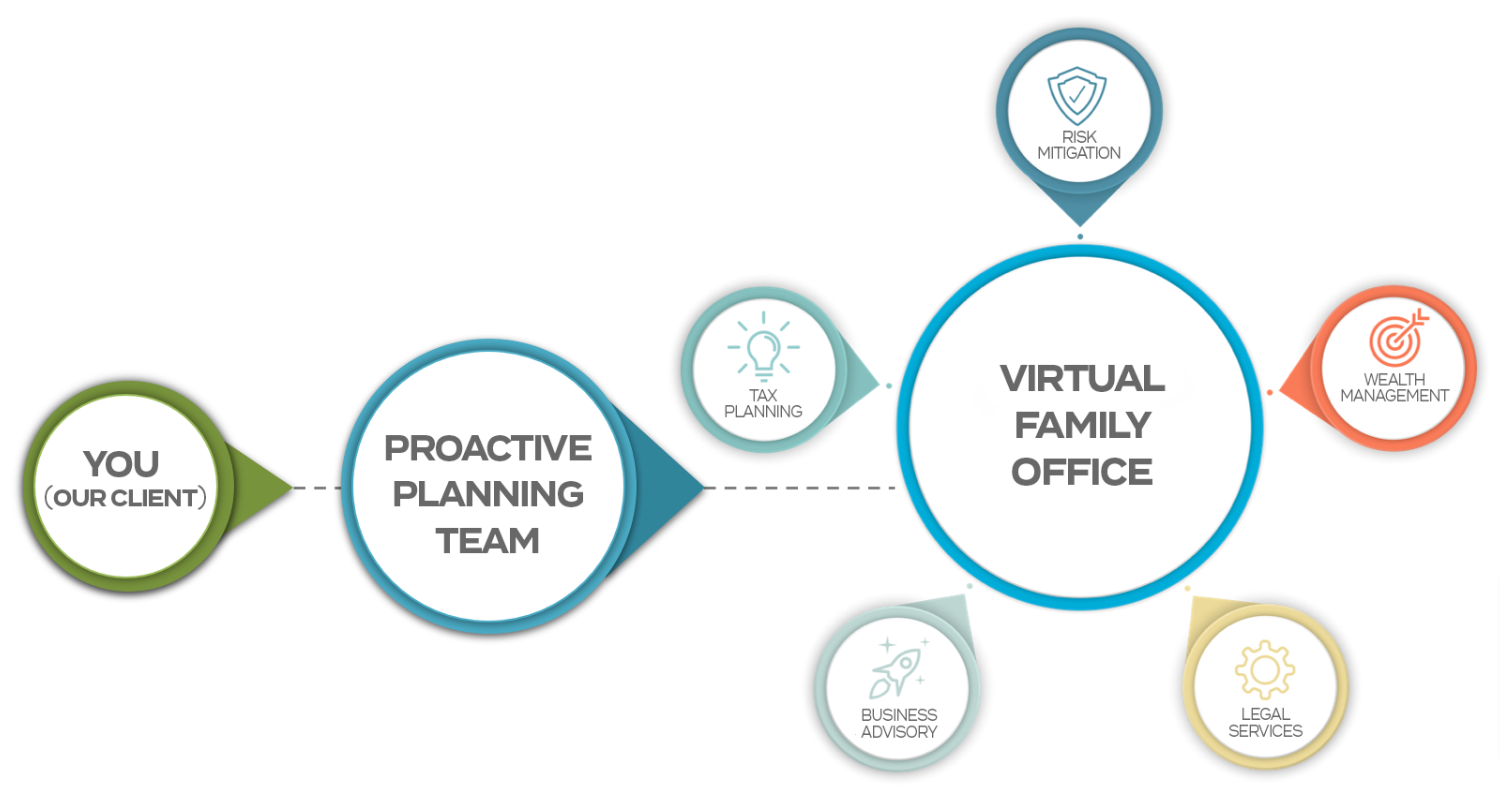Creating A Family Business Succession Plan That Works
The year-end is a common time for Waukesha County business owners (like you, perhaps) to take stock of where they’re headed in a few years’ time … and what the plan for the business could and should be without them *in* it.
(It’s also a VERY good time for some last-minute tax planning with Dale Hammernik and team ! Here’s our number for that: (414) 545-1890)
Well, I have a story today for you. A sequel, if you will, to an old Disney classic …
You see, many years after their wedding, Belle and her Beast of a prince built a widely-successful family business (though it never reached into Waukesha County — I heard all this from a friend ). They also had two sons — Scurry and Hyde — as well as a daughter named Caroline. Beast (who was as smart as he was handsome), assumed that a simple inexpensive succession plan was all that was needed. So he left the management and control of the family business to his sons, with one third of the profit to his beloved Belle, and the balance in equal shares to his children, Scurry, Hyde, and Caroline.
). They also had two sons — Scurry and Hyde — as well as a daughter named Caroline. Beast (who was as smart as he was handsome), assumed that a simple inexpensive succession plan was all that was needed. So he left the management and control of the family business to his sons, with one third of the profit to his beloved Belle, and the balance in equal shares to his children, Scurry, Hyde, and Caroline.
Sadly, Beast died of Feline Infectious Peritonitis the next year.
Five years later, Scurry and Hyde were collecting piles of gold in salary. Their lavish “business” expenses left only a meager profit to be shared with the others. Belle and Caroline struggled to make ends meet on the leftovers.
You see, the moral to THIS family story is this: Dividing *ownership* of a family business is the easy part. Ensuring equitable provisions for the entire family is what’s most difficult.
Dale Hammernik Describes
A Succession Plan That Works
“If you ask what is the single most important key to longevity, I would have to say it is avoiding worry, stress and tension. And if you didn’t ask me, I’d still have to say it.” – George F. Burns
Try out these numbers: Only 34% of family businesses successfully pass to the second generation, and only 13% make it to the third generation. Avoiding these problems in your Waukesha County family business is dependent on taking into account family dynamics and the different roles in the family business.
These family business successions are most successful with wisely integrated planning of three roles: family, business and ownership – each of which have different goals and objectives as well as rules of behavior. Behavior that is appropriate or tolerated at home may be inappropriate in the business environment. And while many families avoid discussions where there is disagreement, encouraging the expression of disagreement is critical in the business realm, especially the “family business” realm.
Family Leadership
For most family businesses, the family role is the most important. The emotional issues of unconditional acceptance and equality are both the friction and the glue in many families. Families are naturally inward-focused, seeking to nurture and develop the next generation. This is how it should be.
However, the challenge here is for the older generation to pass on not simply the acumen of the family’s finances, but the strength of the family’s values. Each generation has to be actively raised to the level of “peer” by the actions and attitudes of the generation before them. Beast’s first mistake was failing to provide that type of mentoring for Scurry and Hyde in advance. (Or maybe it was his choice of names!)
Proven family character must be required for leadership in the family business, and a board of directors with at least two outsiders would help keep family values intact. (Mrs. Potts, Lumiere and Cogsworth would be excellent candidates for Belle & Beast’s Board of Directors.)
Business is Business
It’s best to keep a boundary around the realm of the business. For a business to be successful, it has to be able to able to change quickly. Obviously, it has to generate profits, and therefore must be outwardly focused. As a result, family members can’t be treated equally.
If one family member works part time, while another chooses to work full time, plus nights and weekends, the monetary incentive needs to be in proportion to the profit each brings into the business.
If a business is passed from one member of the older generation to a single member of the next generation, many issues can be postponed or ignored. But if the business moves from a single owner to a partnership of siblings (and then to a set of cousins who are shareholders), the business must continue to run like a business–while simultaneously dealing with a possible wicked brew of family tension. You need to plan for: leader selection, the role of non-employees, conflict resolution, and the shared control of different family branches.
Further, those actually running the business must also be trained in the financial responsibility of management, preferably before the change of ownership. There will need to be policies for fair dividend distribution for those not employed. Again, it’s a very good idea to delegate certain outside governance by a carefully selected Board of Directors.
Who’s The Boss?
As soon as a family business is divided into shares, there will be those working “in” the business and those who merely own shares in the business. Plans must be made for buy-outs, professionalized management, mentoring, and family council meetings.
Transfer of ownership is the least complex of these three roles for planning, but it won’t achieve your succession goals without a solid family structure AND a healthy business structure in place.
Family businesses are complex, needing to address multiple roles. Wise planning for the Waukesha County area family business accepts, mentors and integrates others (family role); makes a profit and demonstrates objective professionalism in its decisions (business role); and plans for the inevitable – a successful transfer of ownership to the next generation (ownership role).
With this (perhaps disturbing) story, I’ll leave you until next week. Again, if you are operating a family business, make sure you get this straightened out.
Feel very free forward this article to a
Waukesha County
business associate or client you know who could benefit from our assistance — or simply send them our way?
While these particular articles usually relate to business strategy, as you know, we specialize in tax preparation and planning for
Waukesha County
families and business owners.
And we always make room for referrals from trusted sources like you.
Warmly (and until next week),
Dale Hammernik
(414) 545-1890
Hammernik & Associates
The post Creating A Family Business Succession Plan That Works appeared first on Talking Tax to Milwaukee.
See More Blog Posts







